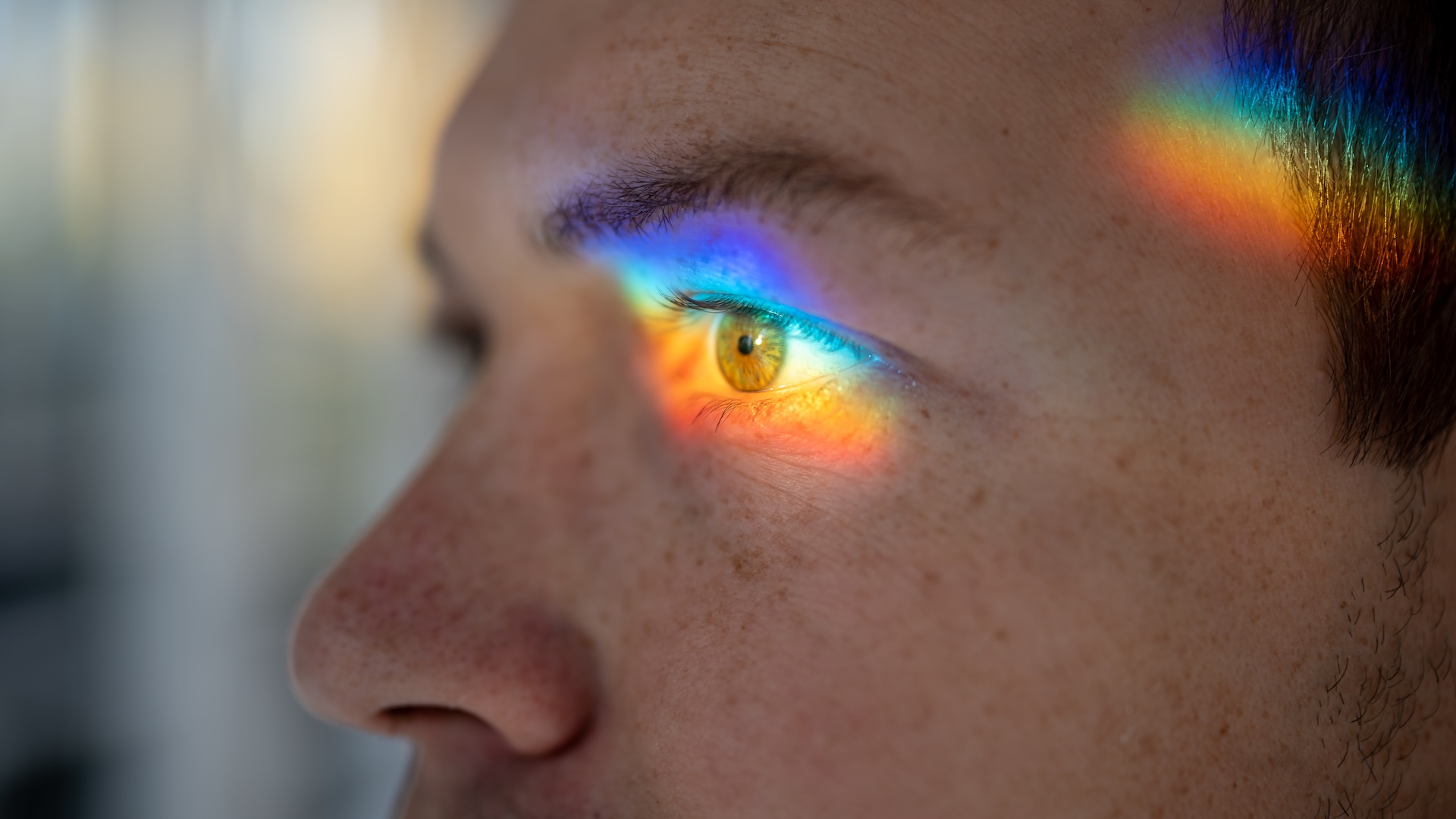Why is color blindness so much more common in men than in women?
About 1 in 12 men is color-blind. Why doesn't this condition affect women as often?

An estimated 300 million people worldwide are color-blind. This typically means they can't distinguish certain shades of color, they struggle to tell how bright colors are or, more rarely, they can't see any colors at all. Color blindness doesn't affect males and females equally, though. According to Cleveland Clinic, the condition affects about 1 in 12 males, compared with 1 in 200 females.
So why are so many more males color-blind than females?
The answer comes down to the genetics governing the function of the human eye. People see colors using specialized cells in the backs of their eyeballs called cones. There are three types of cone cells, and each is tuned to be most sensitive to certain wavelengths of light.
"There are three types of cones that see color: red, green and blue," Dr. Usiwoma Abugo, a clinical spokesperson for the American Academy of Ophthalmology, told Live Science in an email. "When one or more of these color cone cells are absent or not working properly, color blindness happens."
The most common form of color blindness is red-green color blindness. This happens when people are born without the type of cones that are attuned to red and/or green light, or when those cones are in short supply or are inadvertently tuned to the wrong wavelength of light.
If a person has problems with the blue-sensitive cones in their eyes, they will be blue-yellow color-blind, although this form of color blindness is less common than red-green. And if every type of cone is missing or substantially impaired, it can cause total color blindness, also called "complete color vision deficiency." But this form of color blindness is extremely rare, affecting fewer than 1 in 30,000 individuals.
Related: New cells discovered in eye could help restore vision, scientists say
Get the world’s most fascinating discoveries delivered straight to your inbox.
Color blindness affects males more often than females because it's typically caused by a recessive genetic trait linked to the X chromosome.
Recessive traits typically aren't expressed unless a person inherits two dysfunctional copies of a gene, meaning one copy from each parent. As such, a person with one functional copy of a cone-cell gene will usually have normal color vision.
Most males carry one X and one Y chromosome in each cell; they inherit their single X chromosome from their mother and their Y from their father. The genes responsible for the light-sensitive proteins that constitute cone cells are located solely on the X chromosome, though, so that means males get one only copy of each gene — and just one chance for each to work properly.
Thus, if that lone copy has a mutation, they'll likely be color-blind. Females, on the other hand, typically have two X chromosomes in each cell — one from each parent. So even if one X chromosome carries a faulty version of a cone-cell gene, the other often carries a working copy that can compensate. As a result, females are much less likely to develop color blindness, although they can still carry and pass on the faulty genes that underpin the condition.
"Women can experience color blindness, but it's quite rare and is usually caused by something other than genetics," Abugo said. Conditions such as inflammation of the optic nerve, cataracts and glaucoma can cause color blindness later in life, for example.
For now, there aren't any widely available cures for color blindness, but some researchers are investigating experimental gene therapies that could give people with visual deficits tied to their genetics the chance to see the world in full color.
In these animal experiments and early trials with humans, scientists use a harmless virus to deliver functional cone genes into the eyes. These therapies have so far been used to restore full color vision in animal models with the same genetic mutations that color-blind people have, and now, they're now being investigated in humans.
This article is for informational purposes only and is not meant to offer medical advice.

Marilyn Perkins is the content manager at Live Science. She is a science writer and illustrator based in Los Angeles, California. She received her master’s degree in science writing from Johns Hopkins and her bachelor's degree in neuroscience from Pomona College. Her work has been featured in publications including New Scientist, the Johns Hopkins Bloomberg School of Public Health magazine and Penn Today, and she was the recipient of the 2024 National Association of Science Writers Excellence in Institutional Writing Award, short-form category.
You must confirm your public display name before commenting
Please logout and then login again, you will then be prompted to enter your display name.
